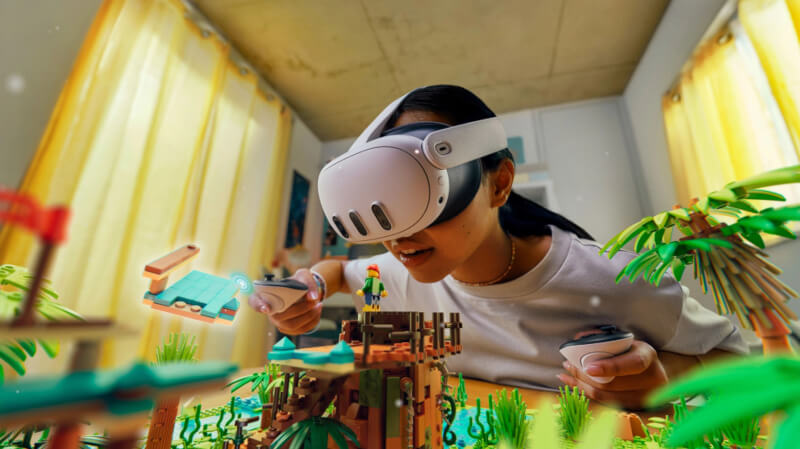Meta CTO: Retina-VR headsets far away

Meta's CTO, Andrew Bosworth, was asked this very question in his latest AMA on Instagram.
Bosworth replied: "In virtual reality displays, we measure the resolution in pixels per degree. The total number of pixels is not the most important thing, because it's about how far they are from your eye and how the lens remaps them. And there are others things that matter a lot, uniformity, how many pixels are in the center versus the periphery, and so on and so forth.” "In Reality Labs' research, we've had a team build these kinds of time machines to see where our ability to distinguish between them is, and it's pretty high. We're building them up to, I think, 100 [PPD] and you can still see the difference. Now there's a curve that flattens out at a point where the marginal improvement between 80 and 100 isn't that great, but you can still see the difference." "I think it's pretty high up there. We don't know how to produce displays with the kind of density, the power required, or the form factor. As it is now, we're not even there, so it's a long way off ."
Meta's "time machines" and the quest for retina resolution in headsets Technically, a retinal VR display would be one where you couldn't tell the difference between a screen and natural vision. But as Bosworth points out, the potential for higher-resolution VR displays is significant.

The current units are far from 100 PPD, and even far from there. According to Meta, the Quest 3 has a PPD of 25, the Vision Pro is estimated to be around 34 PPD, and the Varjo XR-4 achieves 51 PPD in the center of the screen.
By the "time machines," Bosworth is referring to Meta's headset research prototypes, which are designed to provide a glimpse into the future and show how certain technologies might one day make a difference. In 2022, Meta introduced the prototype "Butterscotch" with a PPD of 55.
To achieve this, the team developed a new hybrid lens and reduced the field of view by half. This was followed in 2023 by the "Butterscotch Varifocal", which added a varifocal screen and offered a PPD of 60. Both prototypes are not intended to become products, but are for research and demonstration purposes only.
Latest gadgets
-
19 Sepgadgets
-
23 Maygadgets
LaserPecker LP5 Laser Engraver
-
01 Maygadgets
Swytch launches Swytch Max+ Kit
-
10 Margadgets
DJI AIR 3S
-
03 Margadgets
Razer Wolverine V3 Pro
-
21 Febgadgets
OBSBOT Tiny 2 SE
-
13 Febgadgets
Corsair launches Platform:4
-
17 Jangadgets
Nerdytek Cycon3
Most read gadgets
Latest gadgets
-
19 Sepgadgets
DJI launches Mini 5 Pro
-
23 Maygadgets
LaserPecker LP5 Laser Engraver
-
01 Maygadgets
Swytch launches Swytch Max+ Kit
-
10 Margadgets
DJI AIR 3S
-
03 Margadgets
Razer Wolverine V3 Pro
-
21 Febgadgets
OBSBOT Tiny 2 SE
-
13 Febgadgets
Corsair launches Platform:4
-
17 Jangadgets
Nerdytek Cycon3






